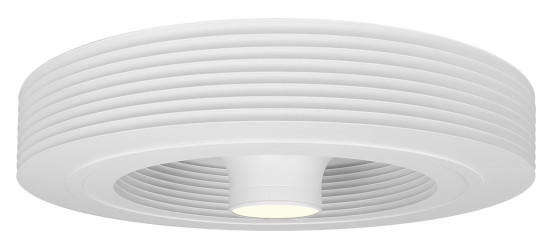RE2020 for private homes: work reserved for the customer, what points to watch out for?
Contracts for the construction of private homes are governed by a special framework that protects consumers.. The price of the house to be built, as stated in the contract, must include the cost of the building, which is equal to the sum of the agreed price and, where applicable, the cost of any work that the client reserves the right to carry out.[1]. This work, which is the responsibility of the buyer, is known as “reserved work”. If they form part of the project, it is essential that the builder includes the cost of the ceiling fans in the price. This is all the more essential as the French Construction and Housing Code (CCH) stipulates that the builder is obliged to carry out or arrange for the carrying out of the reserved works, at the prices and under the conditions specified in the contract, if the project owner requests this within 4 months of signing the contract[2]. In short, the work reserved, which appears in the notice attached to the contract, must therefore be quantified very precisely. In 2019, the Court of Cassation ruled in favour of a project owner against a builder whose contract did not give a sufficiently precise figure for the work reserved for completion.[3].
What responsibilities does the project owner have?
As part of the RE2020 energy and environmental regulations, building owners are required to submit a certificate of compliance with energy and environmental performance requirements as part of their application for planning permission. This initial certificate requires an energy and environmental study to be carried out, which will probably be managed by the builder. Once the work has been completed, the builder will be required to issue a second certificate attesting that the energy and environmental performance requirements have been taken into account. This second certificate will probably be prepared again by the builder, in accordance with the instructions describing the reserved works. Now let’s imagine that, for reasons of economy, the client chooses products for the reserved works that are different from those in the instructions and less efficient than those mentioned in the study. If the building owner’s certificate is rejected during the inspection, he will not be able to take legal action against the builder, and will have to replace the entire non-compliant installation at his own expense. Failure to obtain this administrative authorisation is one of the conditions precedent in most private home construction contracts. However, resolutory conditions mean that if the non-fulfilment of a suspensive condition is attributable to the project owner, the contract is terminated to the detriment of the latter[4]. In a situation where the work reserved for the client does not comply with the thermal study, the client may be seriously penalised.
Certificate of compliance with energy and environmental performance requirements
Attestations that energy and environmental performance requirements have been taken into account in the RE2020 will appear in the decree of 30 November 2021 and the order of 9 December 2021. The text of the decree is very clear: it provides for the summary of the energy and environmental study to be supplied in computerised format, along with documents justifying the quantities and references of the products included in the summary. Finally, the texts highlight the importance of compliance with summer discomfort levels, without which the building is not compliant. It should be remembered that ventilation systems are one of the main pieces of equipment used to meet this degree-hour criterion. An authorised inspection body will check the certificate on site, to ensure that the description corresponds to the equipment actually installed. Consequently, to ensure compliance with the RE2020 requirements on the DH (degree hours) indicator of summer comfort, it is essential to ensure that the product installed on the day of the inspector’s visit complies with the study!
Declaration of completion, bank financing and insurance
The Declaration of Completion and Conformity of Work (DAACT) must be submitted to the Mairie (town hall) where the building is to be carried out. This document, which includes a statement that the RE2020 has been taken into account, is compulsory and punishable by a fine of up to €300,000[5]. If the works are not declared compliant, the permit holder may be held liable to third parties. Most banks and insurance companies will also require this document. Banks will need it to release the relevant tranche of credit. For their part, insurance companies require it as part of the damage to works insurance. Without it, the client could be deprived of compensation in the event of a claim.
Last minute: visual inspection of air vents for declaration of completion
Article 7 of the Order of 9 December 2021 refers to the on-site visual inspection of heating or cooling generators and ventilation systems.
On the RT-RE Bâtiment* website, we asked which category ceiling fans fall into: cooling generator or ventilation system.
The response we received on 27 January 2022 was as follows:
“The term cooling covers both active and passive cooling. Ceiling fans and heat sinks are therefore included, even if they are not explicitly mentioned.”
Ceiling fans, like the rest of the equipment, must be visually inspected during the visit.
* The website is published by the DHUP (Direction de l’Habitation, de l’Urbanisme et des Paysage), part of the Ministère de la Transition Ecologique et Solidaire (MTES) and the Ministère de la Cohésion des Territoires et des Relations avec les Collectivités Territoriales (MCTRCT).
Reminder of the standard on height under blades
Finally, in accordance with standard NF EN CEI 60335-2-80, ceiling fans must be installed in such a way that the distance between the floor and the blades is at least 2.30 m. With a height of between 18 and 20 cm, the air fans on this site meet this condition with a ceiling height of 2.50 m.
Example of a description to be included in the leaflet
Here is an example of the text that should appear in the notice describing the work reserved, appended to the contract for the construction of a private home.
Exhale:
Vortex-effect bladeless ceiling fan, Exhale brand or equivalent, with a flow rate greater than or equal to 6900 m3/h and a maximum power of 50W. In accordance with standard NF EN CEI 60335-2-80, the air blowers must be installed so that the distance between the ground and the blades is at least 2.30 m. The LED lamp (optional) will be of the following model:
- option 1: cool light 5500K (COOL) – 1200 lm
- option 2: warm light 3000K (WARM) – 1050 lm
Public price incl. VAT (20% VAT) without LEDs*: XXX € Public price incl. VAT (20% VAT) with LEDs*: YYY €.
* For prices, please contact us

Exhale, the first vortex-effect bladeless ceiling fan
Are you a professional? We have a dedicated area for you.
Follow Exhale Fans Europe on Linkedin














